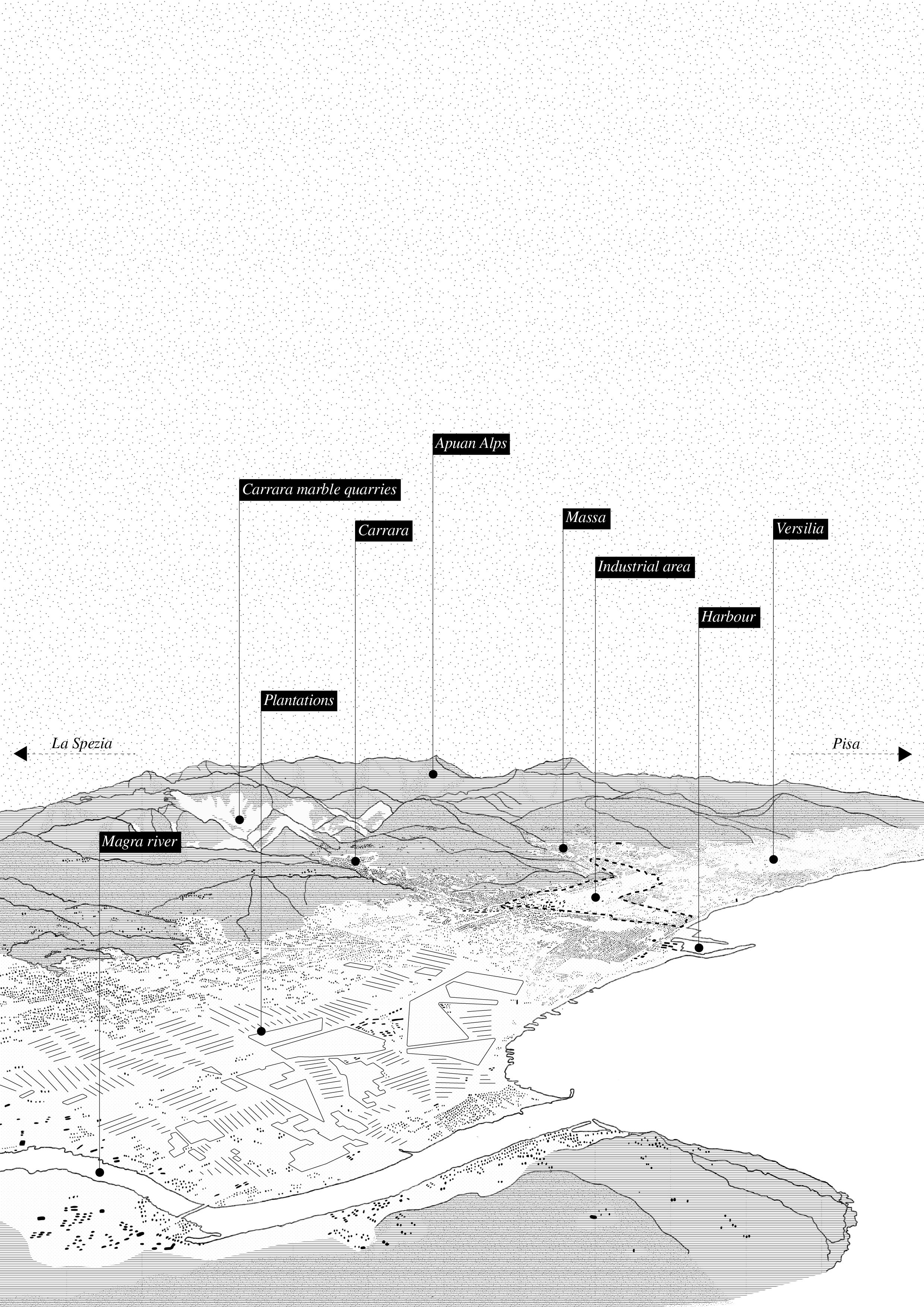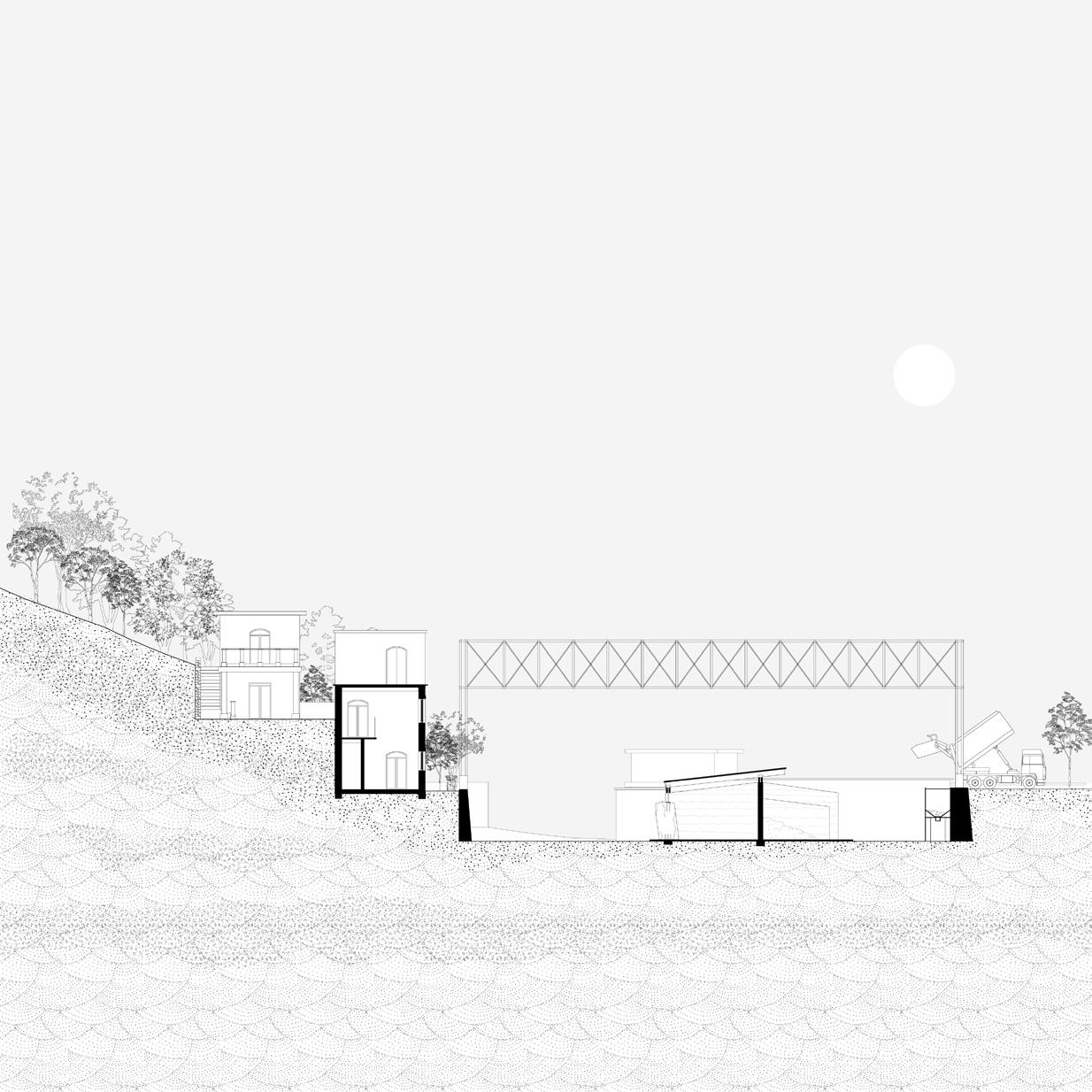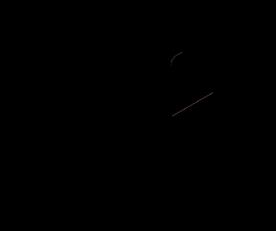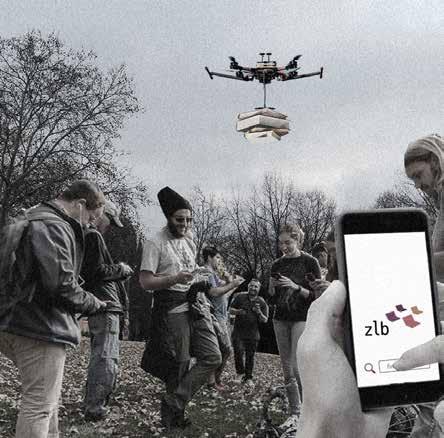Portfolio



PER AGROS
SEEKING TROUBLES
LIVING WITH TROUBLES
MEDIAWERKSTATT
DIEFOODBRÜCKE




PER AGROS
SEEKING TROUBLES
LIVING WITH TROUBLES
MEDIAWERKSTATT
DIEFOODBRÜCKE
walking through the fields. The church of San Gio vanni, built in the 16th century along the northern shore of the lake of Bolsena was abandoned around 1800, following the move of San Giovan ni’s Feast from the ancient site to the village of San Lorenzo Nuovo.
The chapel now stands in the middle of open fields. It is a boundless and unlimited space. The reading of the field as a place of both visible and invisible dimensions, a product of rich history is the starting point of the concept. The project es tablishes a series of elements and signs on the territory that define a field: a 38 m x 38 m square cultivated with wheat, a pure form made of permeable borders.
The architectural elements - the wall, the dormito ry, the auditorium, the chapel and the signs such as a ditch and the path define new rituals. The mo ments of rituality generate interferences between the different inhabitants of the camp, interactions between individuals and collective, between intro spection and sharing, culminating in the setting of the field for the San Giovanni’s Feast after the wheat harvest.
The field becomes a “piazza” , a place of cyclic transformations, a laboratory of spatial and pro grammatic infiltrations and new participated iden tities. It aims at being an element of re-connection with the territory.

view from the dormitory

“meriggiare”
To rest in the shade, especially in the open air, in search of coolness. The wall is the pilgrim’s threshold of arrival. The shade welcomes and in vites the pilgrim to stop for a first moment of inti macy with the place.
“inscenare”
Staging, setting up, sharing, expressing. the plat form is conceived as an open stage in the landscape. A stage for collective expressions of cul tural moments.


“dimorare”
To live more or less permanently in a place; to stay, to remain, to linger. The pilgrims’ accommo dation is conceived in order to share the dwelling after the introspection of the journey.
“invocare”
To call with fervour of affection, to seek contact with oneself outside of oneself. The chapel creates a space where the vertical play of lights is given by the gap between the wooden roof and the chapel’s ruin.




To call with fervour of affection, to seek contact with oneself outside of oneself. The chapel cre ates a space where the vertical play of lights is given by the gap between the wooden roof and the chapel’s ruin.



Territories of extraction: Carrara Marble Quarries with Moritz Ahlert
This work started with the question around the possibility of living with the damages we create (extraction is the first step on the construction process) and on intervening in a meaningful (in terms of collectively meant) way. The task was in spired by the words of Donna Haraway: “We live in disturbing times, mixed-up times, trou bling and turbid times. The task is to become ca pable, with each other in all our bumptious kinds, of response. Our task is to to make trouble, to stir up potent response to devastating events, as well as to settle troubled waters and rebuild quite plac es.”
Since humans exist, they rely on matter. but what nowadays we, as city dwellers , are experiencing is a strong shift towards detachment in our rela tionship with the territories of extraction. Still extraction is a local matter and it relates to and acts in social and spatial arrangements. Architecture and construction constitute one of the most relevant fields of land exploitation. In deed tons of materials are shipped daily around the world in order to fulfil needs of blocks, stone clippings, construction binders, gravel and sand. Nonetheless extraction especially in quarries im plies a large production of waste and refuse.

3,1-9,5 9,6-16,0 16,1-22,5 22,6-29,0
Massa-Carrara
water subsurface runoff leading to water springs are constantly interrupted by quarries
permeable and water proof formations (most of them is quarries waste) overlapped with quarries and water springs

high level of precitita tion in the apuan re gion that leads to high hydrogeological risks



Carrara is a relative small city in the northern part of Tuscany. It is surrounded by the Apuan Alps.
The Apuan Alps are home to one of the largest marble basin in the world, famous for the quality of Carrara’s white marble. The city and the surround ing areas have developed for centuries thanks to the activities related to marble.
Mining has shaped the traditions and culture, de veloped the know-how and defined the charac ter of its inhabitants, who define themselves as “tough” like marble.

However, Carrara marble city, in which everything contributes to the collective imaginary as a space of territorial development and cultural, art production. This imaginary, as an empirical factor is root ed in time and frames narratives that belong even to the inhabitants. Yet, what we see is a vulnerable city.
The city is experiencing a long period of crisis: in the last 30 years, the exploitation of the quarry ba sins has been increasingly disconnected from the social and economic dynamics of the territory.
The region has become a real mining district, where the calcium carbonate market (block re duced to powder) used for the construction sec tor, for the pharmaceutical and cosmetic indus tries (80%) has replaced local productions. The artistic production, which is nowadays equivalent to 0.5% of the extracted material, struggles to move forward but certainly constitutes one of the cultural forces of endurance in the territory.
Still extraction is a local matter.
In this context, I´m interested in the relationship between this specific situation and the universali ty of the mining phenomenon, as well as how local material depletion relates to and acts in social and spatial arrangements.


Making plans for territories of extraction with Philipp Misselwitz, urban catalyst
After a long research and analysis trips on site, as well as with interactions between various in stitutions and initiatives and participation to nu merous debates on the precarious situation in the quarries, we propose the opening of a new trekking path connecting the city and the regional park through the quarries of Miseglia Basin. Along the path 4 steps emphasise the main truobles we want to react to: water, ravaneti, biodiversity and waste. We choose Miseglia Basin and expecially the old train station of Fantiscritti bacause of their everlasting appeal. This place , with its 40 active quarries on an area of 300 ha, seems to be the last point of connection between inhabitants, tourist and the marble industry.
Even today, in the Italian imagination, the Apuan Alps are a destination for excursions into nature and have the reputation of being a place of enjoy ment.With our proposal we want to open a gap in the most famous marble basin in Carrara. The old basin lies within the boundaries of the region al park (Parco Regionale delle Alpi Apuane). The essence of the project is to try to reconnect to this controversial territory and make space for unex pected new identities.
The strategy is to make Fantiscritti accessible to citizens, workers and perhaps to curious on foot, directly from the city of Carrara. The path is equipped with 4 “steps”, open-air platforms and closed infrastructures for different types of activi ties and productions, which offers the opportunity to cultivate and experience territories in a direct way.
Natural Park


It intends to open the doors of the existing spring at the foot of the Miseglia Basin. The spring plays a very important role in prevention of floods dur ing heavy rainfalls.

is the securing and reconstruction in form of wall structure of an existing “ravaneto” (large pile of debris and waste material).
consist in a monitoring station of humid biotopes in quarries, due to an unique event of the interac tion of rain-water and minerals.
new infrastructures for locals, students of the Art Academy, as well as initiatives that engage with the topic of extraction.



Intervention in Step 4
Fantiscritti is the old train station up in the quar ries. The place is characterised by old infrastractures and informal activities. Through the project, different actors, such as art academy, laboratories and manufacturies, public organizations and researchers will be able to find new forms of engagement with the territory.
Contro-manifattura: is temporary manufactory for the processing of waste materials. A structure for experimenting with different quarries leftovers. The waste from the quarries becomes a commu nity social event to encourage the district to reduce exploitation and increase reuse.
Accademia del Marmo:
In the existing rooms of the abandoned trainsta tion, sculpture students of the Art Academy can work directly on site, having easy access to the raw materials.
Casa del Territorio: The house hosts a territorial forum for a perma nent debate to search and find missing territorial identities. The existing building on the hill along the path will be open to public events and in order to reconnect citizens with their territory.

construction site led by a the territorial trust restauration of the old train-station rooms replacement of ruined elements re-use of waste to create rammed-earth components.
interventions of the territorial trust Contro-Manifattura Accademia del Marmo Casa del Territorio








Central state library, Berlin with Finn Geipel, LIN
The Medienstadtwerk embodies the Central State Library Berlin on Blücherplatz at Hallesches Tor and forms a unique new place of shared learning and exchange open to people of all ages, gen ders, creeds, looks, origins, incomes. The place, characterised by tolerance and openness, will be strengthened by the addition of the new Central State Library building. The library remains a place of social exchange, of knowledge acquisition, a prerequisite for social participation, an identi ty-forming place of community.
A monumental structure complements the exist ing building of the Amerika-Gedenk-Bibliothek and gains radiance far beyond the city. The urban setting captures the flows of the neighbourhood and the intersections of rail, bicycle and motor ised traffic in the surrounding districts. The new building extends urban public spaces from the AGB to the Heilig-Kreuz-Kirche. The focal point of exchange, discussion and debate will be the Amerika-Gedenk-Bibliothek, which will assume the role of a forum for all residents: a Kiezforum. The Medienstadtwerk plays with the staging of its fully automated high-bay warehouse, the engine of the library. Complex automated processes thus gain transparency for library visitors, who are giv en the opportunity to understand the automated processes behind the scenes. The performance of the machine can be seen from all sides and is displayed in the core of the foyer like a precious diamond.
Towards the top, the open-air media center for the audience unfolds around an organically formed Lichthof towards the top. From noisy spaces such as the event hall, the atmosphere develops up wards towards increasingly concentrated, quiet work. The Lichthof forms the connector that turns the library into an open, communal space through various forms of communication.











ground floor: stacks, lobby and gastronomy second floor: media center and event hall fourth floor: open library







site-specific interventions: mobile kitchens to overcome barriers with @spacejamberlin


